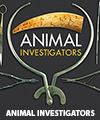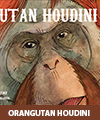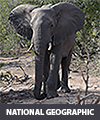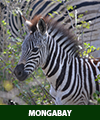
Why I Wrote Animal Investigators
Origin of the Book
Musa Mohammed Lyimo, a dark, stocky, energetic man who’d served as Tanzania’s chief wildlife officer, told me how, eight years earlier in 1992, he suspected poachers had killed dozens of dead elephants that his wardens had found sprawled near remote watering holes. But he couldn’t prove it until scientists at the U.S. Fish and Wildlife Service Forensics Lab, the world’s only forensic lab dedicated to wildlife, uncovered the cause of death: poison.

Tusks
Intrigued by an article I’d read on the incident, and knowing I’d be in East Africa for work (consulting for USAID), I’d tracked Lyimo down in Nairobi at the Lusaka Agreement Task Force, a regional organization to combat wildlife poaching in southern and east Africa, to learn more. Sitting in his spare government office, Lyimo told me how his subsequent investigation revealed the elephants had been killed by a lethal combination of readily available agricultural pesticides and herbicides that poachers had injected into pumpkins and scattered around the drinking places as bait. It was better than their previous method of dumping the poison into the watering holes, he told me with a gleam in his eye. That killed everything – including some poachers.
I wanted to help break that cycle. I could do that by telling their stories. Animal Investigators is the result.Lyimo handed me two heavy tusks. One had rough cuts, where it had been hacked out of an elephant’s skull, while the other was smooth and neat. Poison, the African explained, lets the ivory slip out easily a few days after the animal dies.
As we spoke, his phone rang and I listened to the one-sided conversation. When he hung up, he told me the call was a report of dead hippos, poisoned for their ivory teeth in a manner very similar to the elephants. I knew it was impossible to patrol such a remote and vast area, and that wildlife forensics could transcend time and space to link the poachers and ivory traffickers to their crime. Seeing this seemingly never-ending round of poaching for profit, I wanted to help break that cycle. I could do that by telling their stories. Animal Investigators is the result.
About the Writing
Discouragement often yields the drive to overcome obstacles—and so it was for me with this book. After talking with the lab’s scientists about potential cases to feature, I proceeded with the next step: talking with FWS agents. I phoned Al Crane for more information about walrus poaching and was taken aback by his reply. “Nobody has ever written well about the region if they haven’t lived there,” he told me, strongly discouraging me from writing that story. He agreed to correct what I learned elsewhere but would provide no direct information.

A photo I took while in Africa
I was at a standstill. I’d spent my career living and working overseas, mostly in Africa, precisely because I knew how important living in a place was to really knowing it. Over the years, I’d traveled to almost a dozen African countries—Botswana, Cote d’Ivoire, Kenya, Mali, Morocco, Mozambique, Namibia, Senegal, South Africa, Tanzania, Zimbabwe—and worked in others all over the world. In my heart, I didn’t disagree with him. Yet I also knew my limitations. I couldn’t justify going to Alaska then, and even if I did I’d never gain the access I’d need in a short period of time. I almost gave up, but the more I researched the lifestyle and culture of Native Alaskans, the more I realized that it was similar to something I knew well—the situation of rural Africans who subsisted on what they grew or hunted. The climate was just different.
Reading a draft, Crane was floored. “I can’t believe you’ve never been there,” he said. “I’ve never seen anybody write like that.” Wondering what I could do if I actually did go there, he offered to take me around the remote subsistence hunting villages in northwest Alaska, an opportunity I immediately accepted. Traveling with someone who’d lived in the region for over 30 years, who could vouch for me, would give me insights into the hearts and minds of people who, normally, would never open up to me.
I gained similar access for every aspect of this book by proving myself through my writing and my reliability in getting the story right. While not relinquishing editorial control, I shared drafts with people I interviewed so that they could see how I planned to use our discussions, correct it when it was wrong, and gain confidence in my ability to tell their stories. That back-and-forth built trust which allowed the scientists, agents and others to talk with me in a relaxed way that resulted in finer details and deeper insights. It also led to cherished new friendships.
Most people were happy to talk with me because nobody had told the full story before. With no vested interest yet with expertise in the subject area, my “outside” perspective lets me show how wildlife forensics and law enforcement are important not only to stop illegal trafficking but also to address larger wildlife conservation issues, namely whether legal wildlife trade promotes or hinders poaching and the wildlife black market. Indeed, that same question of whether legal activities lead to more or less illegal ones crosses many realms, from arguments about legalizing marijuana to abortion to euthanasia. Perhaps wildlife forensics ultimately will not only address the crimes at hand but also provide vital insights to help resolve this sticky debate.
For Media Inquiries, Events, Speaking Engagements and School visits:
Twitter: @LaurelNeme
https://www.facebook.com/LaurelANeme/
She specializes in bringing together diverse perspectives — from farmers and indigenous groups to high-level policymakers — to create positive solutions that protect wildlife while improving the livelihoods of those living near the animals.



